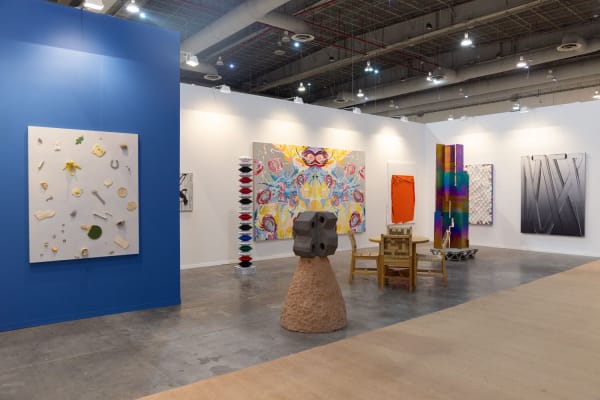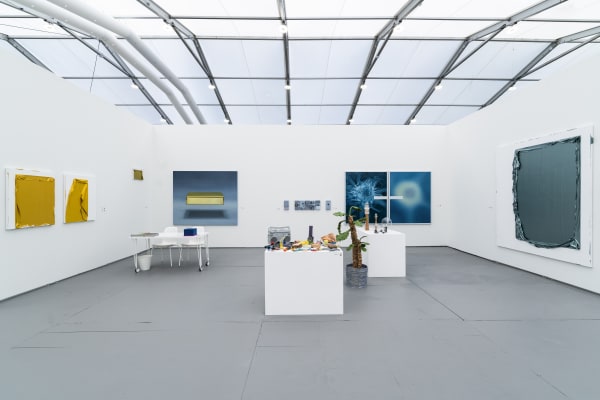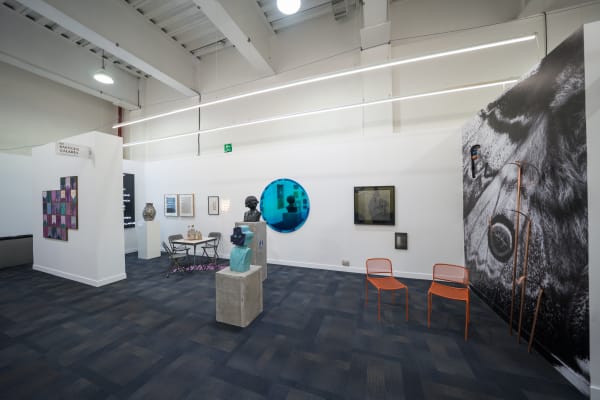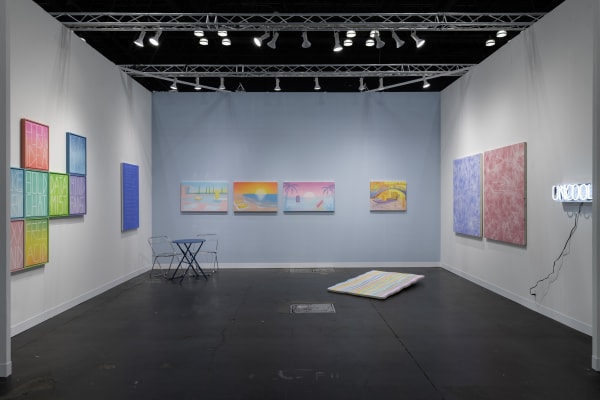This, That, & the Other by Scott Reeder: at Main Room
"Things have just been getting funnier since Duchamp. Many people have accepted the
idea that art can be absolutely anything, but they might still think it shouldn't be funny."
In this quote, taken from an interview published in Art in America magazine ten years
ago, Michigan-born artist Scott Reeder (born 1970) expresses some of the fundamental
interests of his practice: art history, the public use of art, and art criticism seen through
parody and sharp humor. From this peculiar perspective, Reeder presents his first solo
exhibition in Mexico in collaboration with Saenger Galería: This, That, and the Other.
"Things have just been getting funnier since Duchamp. Many people have accepted the
idea that art can be absolutely anything, but they might still think it shouldn't be funny."
In this quote, taken from an interview published in Art in America magazine ten years
ago, Michigan-born artist Scott Reeder (born 1970) expresses some of the fundamental
interests of his practice: art history, the public use of art, and art criticism seen through
parody and sharp humor. From this peculiar perspective, Reeder presents his first solo
exhibition in Mexico in collaboration with Saenger Galería: This, That, and the Other.
Consisting of three of his most recent series —Object Paintings, Image Paintings, and
the Kuddelmuddel Ceramic series—Reeder’s exhibition brings together a vast
collection of flat and relief paintings, as well as glazed earthenware sculptures, which
allow the public to delve into the trajectory of more than twenty-five years of the so-
called Midwestern Magritte. This analogy with the Belgian artist, the painter among
philosophers, is due to a common observation of the everyday and the questioning of
normality. The similarity between the intentions of both artists is deeper if
confrontation is considered as a compositional strategy; either a material friction, as
occurs in the ceramic paintings of relief ceramic paintings, where a super-flat and
smooth surface, in pastel tones and a diluted appearance, contrasts with the mass of
small, solid, and shiny glazed ceramic figures, or the clash due to repetition in which the
same pair of protagonists, bread and butter, appears in different contexts or in the
same situation with subtle variations.
Together with the paintings of bread and butter, which in their repetition and variation
of the same theme remind us of the classic studies of the Artist and His Model by
Picasso or Turner's at once intimate and epic character landscape or any other genre
and artist from the pictorial tradition turned cliché, the sculptures and installations of
everyday objects made from ceramic are the works included in the exhibition This, That
and the Other in which Reeder has further explored the multiplicity of possibilities of
humor, of harmless appearance, but with a highly corrosive impact. Reeder has stated,
"Whether it's funny or not, I'm definitely interested in a kind of extreme reduction,
understatement, or deadpan, in making something really concise." And it is precisely his
small, diverse, common, and numerous sculptures of earthenware ceramics, very
punctual reductions of a concrete, daily, and discrete reality - a collection of banal
objects belonging to a world of multiples without originals - before which, however, it is
still possible to be surprised.
Although the artist has confessed that his work "almost always begins with language,"
it is equally worth noting that the astonishment that his work triggers, in terms of
ingenuity, strangeness, panic, and admiration, does not require any explanation. His
practice inhabits the paradox and evidences the nonsense of reality, and like reality, it
simply exists, as other things exist, in its rebellion and its contradiction. Reeder names
that anonymous, abstract, and everyday world; he is a faithful and keen reader.
— Christian Barragán








